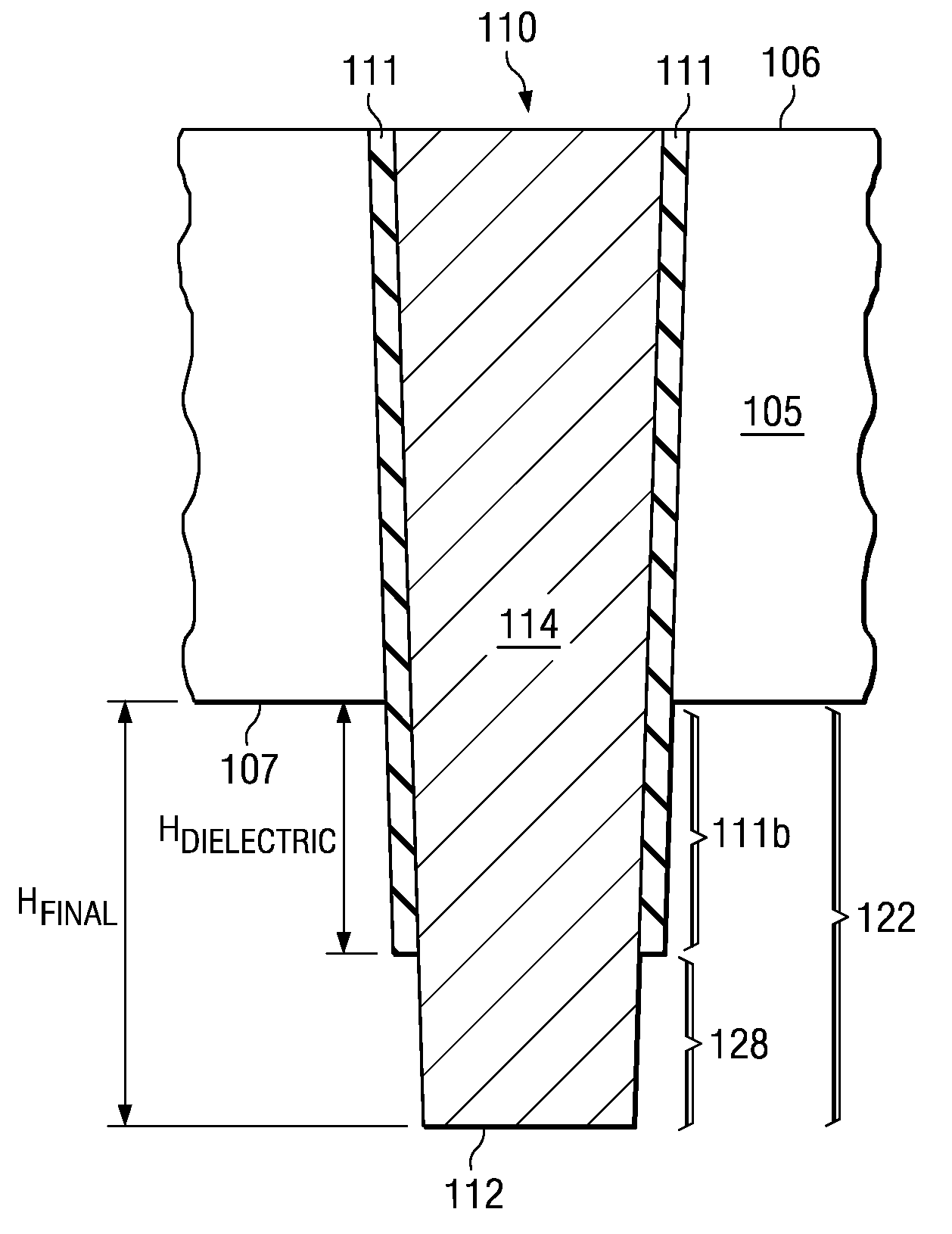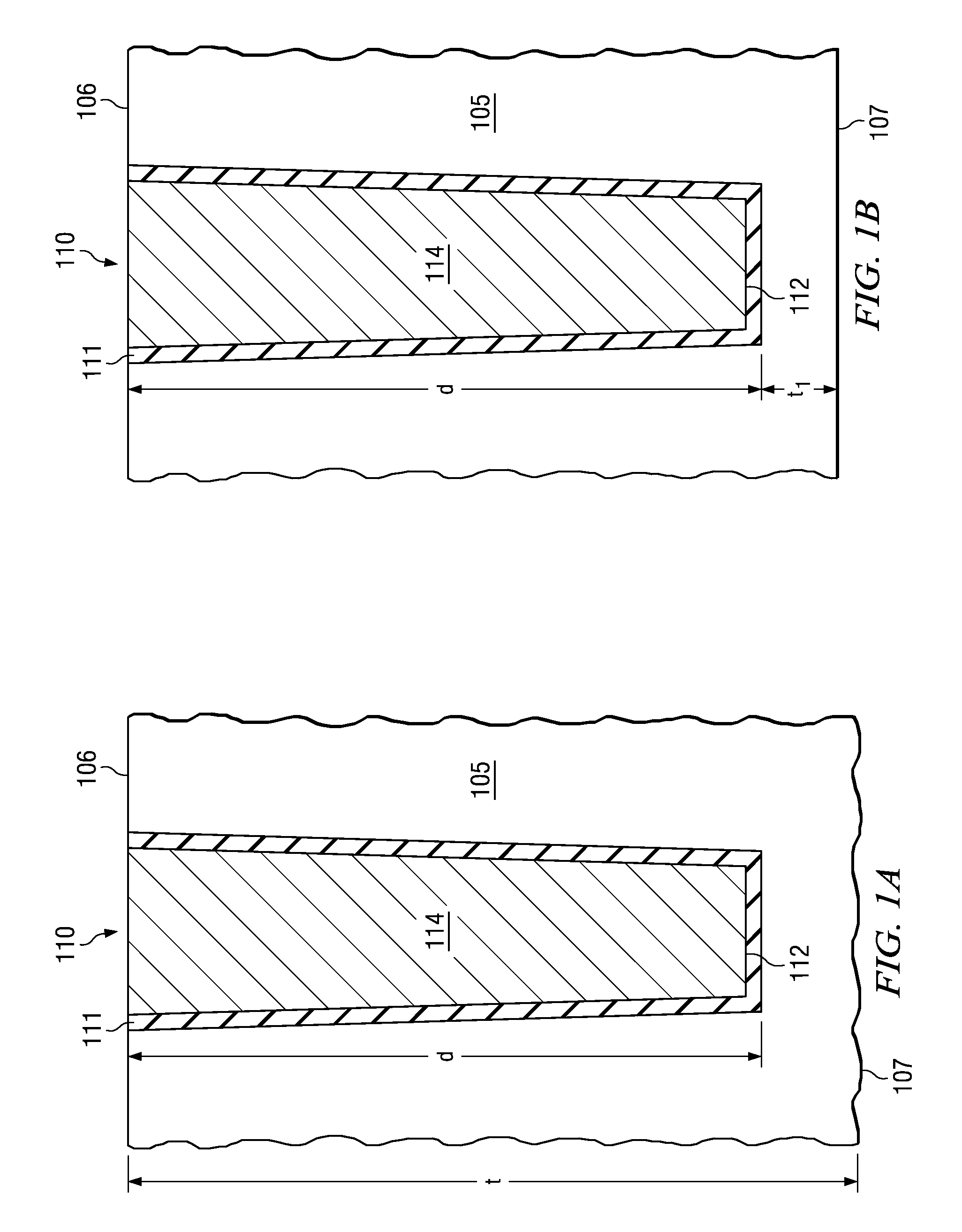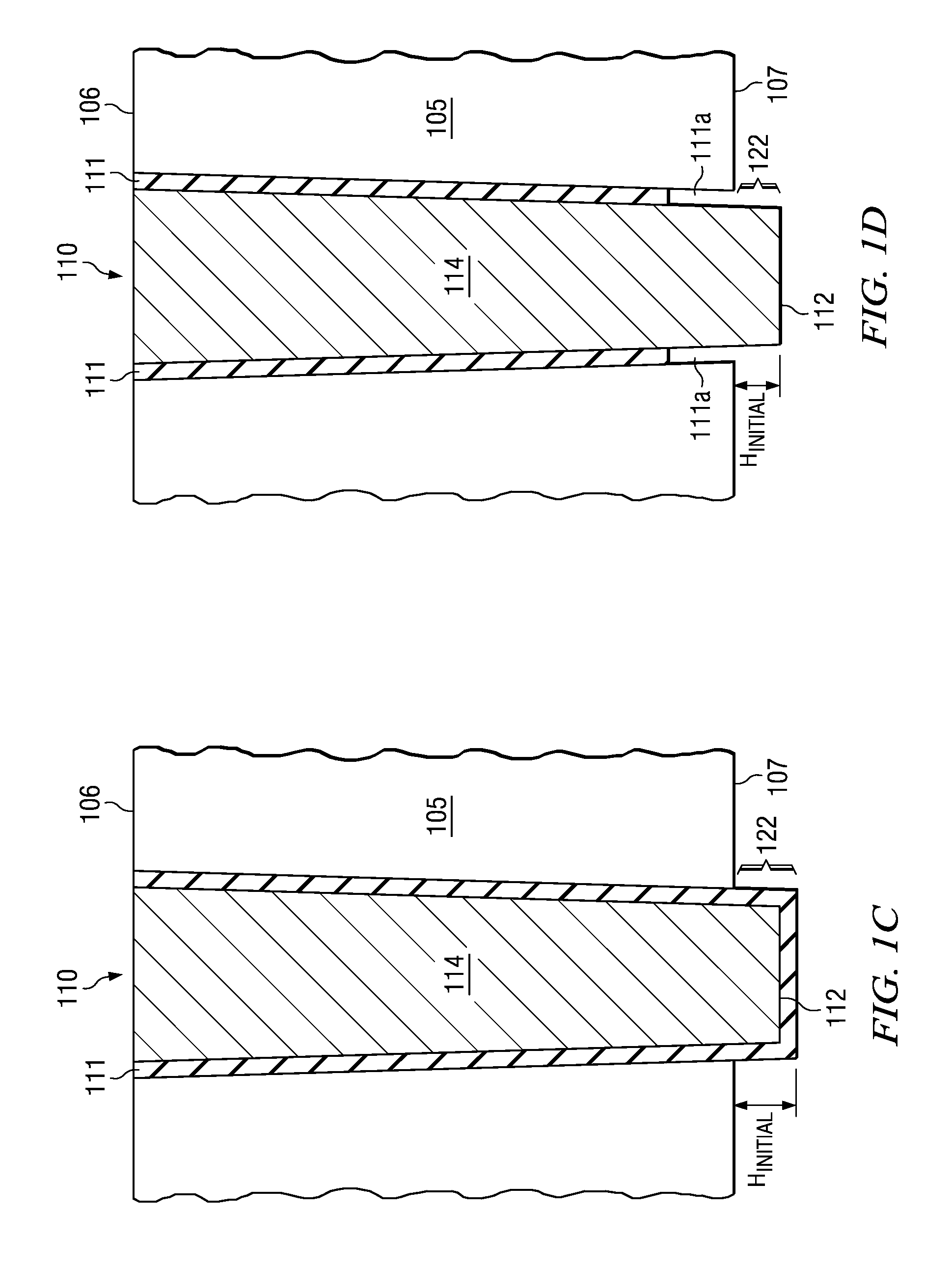TSVS having chemically exposed TSV tips for integrated circuit devices
a technology of integrated circuits and tsv tips, which is applied in the direction of semiconductor devices, semiconductor/solid-state device details, electrical apparatus, etc., can solve the problems of reducing the reliability of ic, reducing the lifetime of minority carriers, and reducing the separation distance between the exposed electrical conductive filler material of the tsv tip and the substra
- Summary
- Abstract
- Description
- Claims
- Application Information
AI Technical Summary
Benefits of technology
Problems solved by technology
Method used
Image
Examples
examples
[0056]Embodiments of the present invention are further illustrated by the following specific Examples, which should not be construed as limiting the scope or content of embodiments of the invention in any way.
[0057]Bulk silicon wafers were fabricated to include a plurality of embedded TSVs that were approximately 130 μm deep, filled with copper, and lined with a SiO2 liner and a TaN barrier. The TSVs had a diameter from 20 to 30 μm and a pitch of 50 to 70 μm. The wafer thinning and die attach flow is described below. The active circuit face of the wafer was bonded to a reusable Si carrier wafer using an adhesive. Backgrind was used to obtain a wafer thickness of about 137 μm followed by polishing to remove about 2 μm more of the substrate to result in a wafer thickness of 135+ / −3 μm. The TSVs thus remained embedded after the backgrinding and polishing processing and the thickness of the protective substrate layer was about 5 μm.
[0058]The first backside etch was a silicon etch for et...
PUM
| Property | Measurement | Unit |
|---|---|---|
| thickness | aaaaa | aaaaa |
| height | aaaaa | aaaaa |
| height | aaaaa | aaaaa |
Abstract
Description
Claims
Application Information
 Login to View More
Login to View More - R&D
- Intellectual Property
- Life Sciences
- Materials
- Tech Scout
- Unparalleled Data Quality
- Higher Quality Content
- 60% Fewer Hallucinations
Browse by: Latest US Patents, China's latest patents, Technical Efficacy Thesaurus, Application Domain, Technology Topic, Popular Technical Reports.
© 2025 PatSnap. All rights reserved.Legal|Privacy policy|Modern Slavery Act Transparency Statement|Sitemap|About US| Contact US: help@patsnap.com



